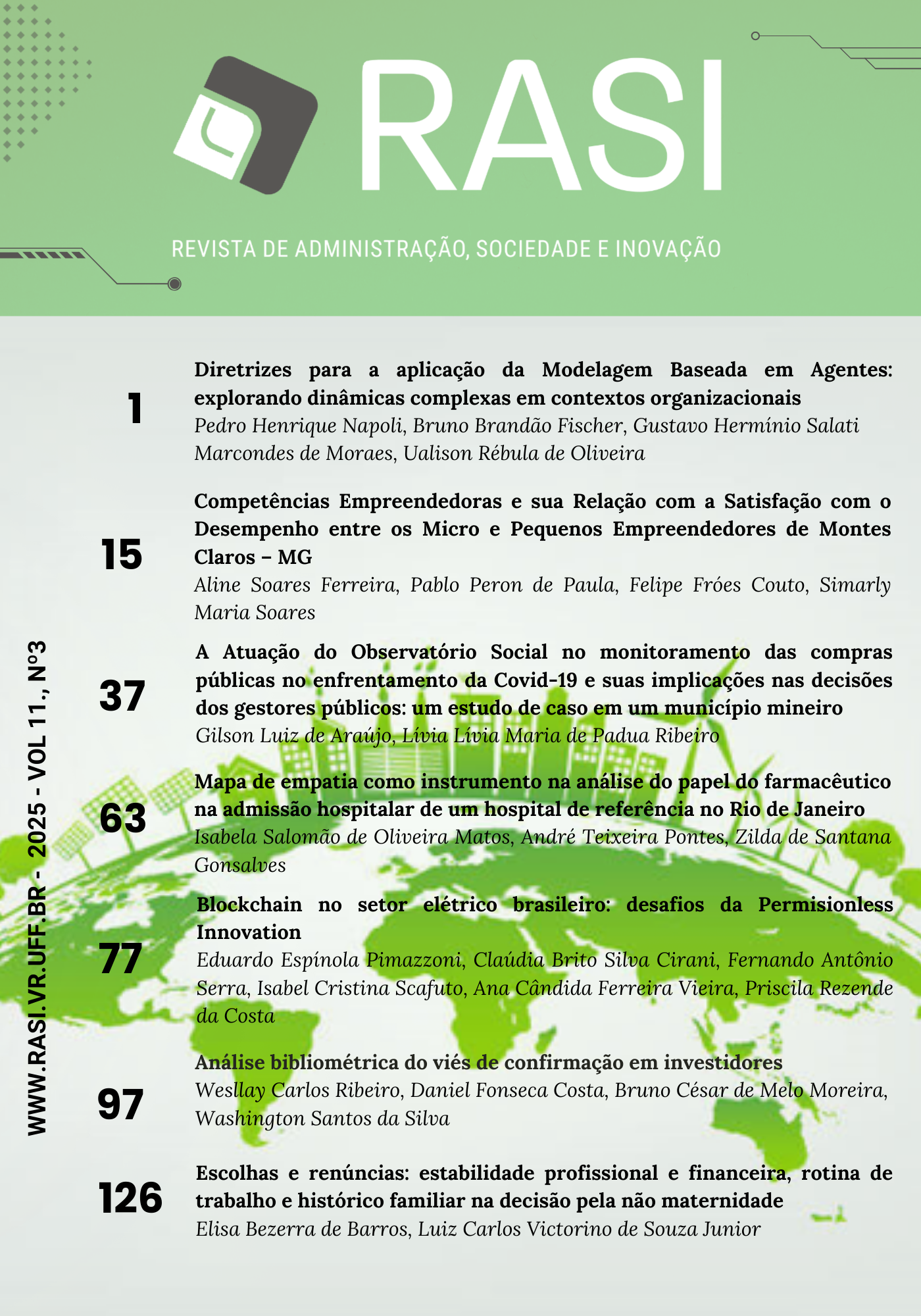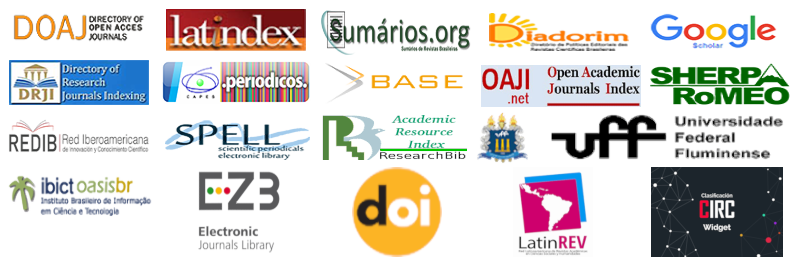Diretrizes para a aplicação da Modelagem Baseada em Agentes: explorando dinâmicas complexas em contextos organizacionais
DOI:
https://doi.org/10.20401/rasi.11.3.1119Keywords:
Modelagem Baseada em AgentesDownloads
References
Anderson, P. W., Arrow, K. J., & Pines, D. (Eds.). (1988). The economy as an evolving complex system. Addison-Wesley.
Arthur, W. B. (2021). Foundations of complexity economics. Nature Reviews Physics, 3, 136–145. https://doi.org/10.1038/s42254-020-00273-3
Axtell, Robert L. and J. Doyne Farmer. 2025. "Agent-Based Modeling in Economics and Finance: Past, Present, and Future." Journal of Economic Literature, 63(1), 197–287.
Bak, P. (1996). How nature works: The science of self-organized criticality (1st ed.). Copernicus.
Borsos, A., Carro, A., Glielmo, A., Hinterschweiger, M., Kaszowska-Mojsa, J. & Uluc, A. (2025), 'Agent-based modeling at central banks: recent developments and new challenges', INET Oxford Working Paper 2025-05.
Caiani, A., Russo, A., Palestrini, A., & Gallegati, M. (Eds.). (2016). Economics with heterogeneous interacting agents: A practical guide to agent-based modeling. Springer International Publishing.
Deissenberg, C., van der Hoog, S., & Dawid, H. (2008). EURACE: A massively parallel agent-based model of the European economy. Applied Mathematics and Computation, 204(2), 541-552. https://doi.org/10.1016/j.amc.2008.05.116
Dawid, Herbert and Mauro Gallegati. 2018. "Agent-based Macroeconomics," In Handbook of Computational Economics, Volume 4: Heterogeneous Agent Modeling, ed. C. Hommes and B. LeBaron. Amsterdam, Netherlands: Elsevier, North-Holland.
Delli Gatti, D., Fagiolo, G., Gallegati, M., Richiardi, M., & Russo, A. (2018). Agent-based models in economics: A toolkit. Cambridge University Press.
Dosi, G., Fagiolo, G., & Roventini, A. (2010). Schumpeter meeting Keynes: A policy-friendly model of endogenous growth and business cycles. Journal of Economic Dynamics and Control, 34(9), 1748–1767. https://doi.org/10.1016/j.jedc.2010.06.018 en.wikipedia.org+15lem.sssup.it+15ideas.repec.org+15
Dosi, G. (2023). The foundations of complex evolving economies: Part one: Innovation, organization, and industrial dynamics.
Dubin, R. (1978). Theory building (Rev. ed.). Free Press.
Haldane, A. G., & Turrell, A. E. (2019). Drawing on different disciplines: Macroeconomic agent-based models. Journal of Evolutionary Economics, 28(2), 219–251. https://doi.org/10.1007/s00191-018-0557-5
Hamill, L., & Gilbert, N. (2016). Agent-based modelling in economics. John Wiley & Sons.
Onggo, B. S., & Foramitti, J. (2021). Agent based modeling and simulation for business and management: A review and tutorial. Proceedings of the Winter Simulation Conference (Volume 2021 December, pp. XX–XX). Institute of Electrical and Electronics Engineers. https://doi.org/10.1109/WSC52266.2021.9715352
Macy, M. W., & Willer, R. (2002). From factors to actors: Computational sociology and agent-based modeling. Annual Review of Sociology, 28, 143-166. https://doi.org/10.1146/annurev.soc.28.110601.141117
Miller, K. D., Pentland, B. T., & Choi, S. (2012). Dynamics of performing and remembering organizational routines. Journal of Management Studies, 49(8), 1536–1558. https://doi.org/10.1111/j.1467-6486.2012.01062.x
Namatame, A., & Chen, S.-H. (2016). Agent-based modeling and network dynamics. Oxford University Press.
Napoli, P.H, Fischer, B. B., & Marcondes de Moraes, G. H. S. (2025). Entrepreneurial agency reloaded: Intentions, capabilities and the dynamics of entrepreneurial ecosystems. Journal of Business Venturing Insights, 23, e00540. https://doi.org/10.1016/j.jbvi.2025.e00540
Nieddu, M., Raberto, M., Ponta, L., Teglio, A., & Cincotti, S. (2024). Evaluating policy mix strategies for the energy transition using an agent-based macroeconomic model. Energy Policy, 169, 114276. https://doi.org/10.1016/j.enpol.2024.114276
North, M. J., & Macal, C. M. (2007). Managing business complexity: Discovering strategic solutions with agent-based modeling and simulation. Oxford University Press.
Pyka, A., & Fagiolo, G. (2005). Agent-based modelling: A methodology for neo-Schumpeterian economics (Discussion Paper No. 272). University of Augsburg, Institute for Economics.
Rand, W., & Rust, R. T. (2011). Agent-based modeling in marketing: Guidelines for rigor. International Journal of Research in Marketing, 28(3), 181–193. https://doi.org/10.1016/j.ijresmar.2011.04.002
Valente, M. (2008). Laboratory for Simulation Development (LSD) [Computer software]. University of Torino. http://www.labsimdev.org
Whetten, D. A. (1989). What constitutes a theoretical contribution? Academy of Management Review, 14(4), 490–495. https://doi.org/10.5465/amr.1989.4308371
Wilensky, U., & Rand, W. (2015). An introduction to agent-based modeling: Modeling natural, social, and engineered complex systems with NetLogo. MIT Press.Zhao, K., Zuo, Z., & Blackhurst, J. V. (n.d.). Modelling supply chain adaptation for disruptions: An empirically grounded complex adaptive systems approach. Journal of Operations Management. https://doi.org/10.1002/joom.1009
Downloads
Published
Issue
Section
License
Copyright (c) 2025 Review of Administration, Society and Innovation

This work is licensed under a Creative Commons Attribution 4.0 International License.
RASI, in accordance with Law No. 9,610 of February 19, 1998, which amends, updates and consolidates Brazilian copyright law and makes other provisions, adopts the following conditions of the Copyright Assignment:
1. RASI maintains, with the transfer of copyrights, the possession of rights over the content published;
2. The author retains his moral rights of the content, including the right to be identified as the author whenever the content is published;
3. Despite the attribution of copyright, the author retains the right to reuse the material in future collections of his own work without encumbrance. The acknowledgments of the previous publication in the RASI are the only requirements in such cases;
4. The author may make photocopies of the content, or distribute it by electronic mail or fax, provided that they are intended for their own classes and for the purpose of meeting research objectives, provided that: (a) such copies are not resold and (b) reference to the original source of the publication and the name of the RASI are clearly indicated on all copies made of the document.











